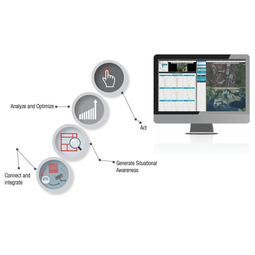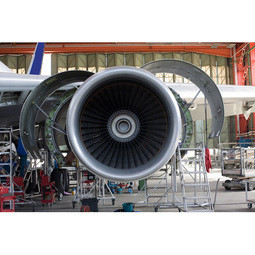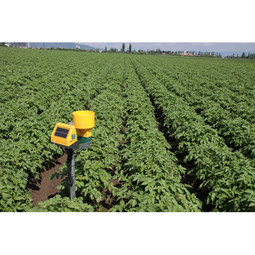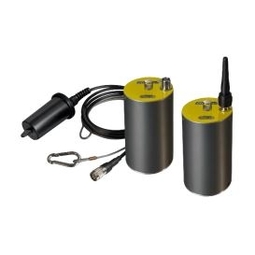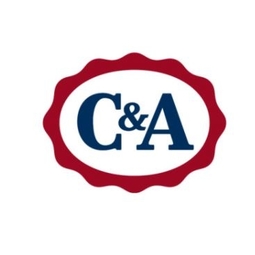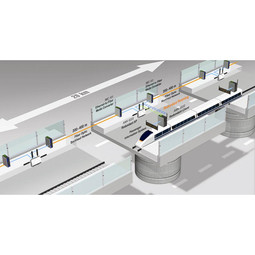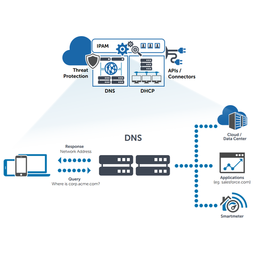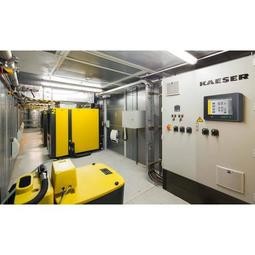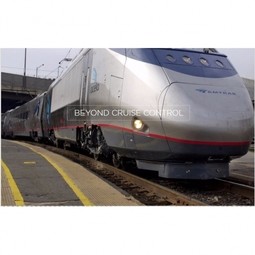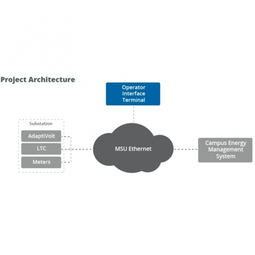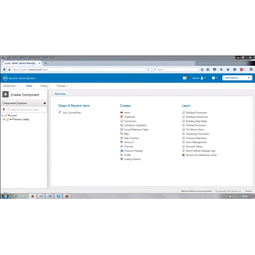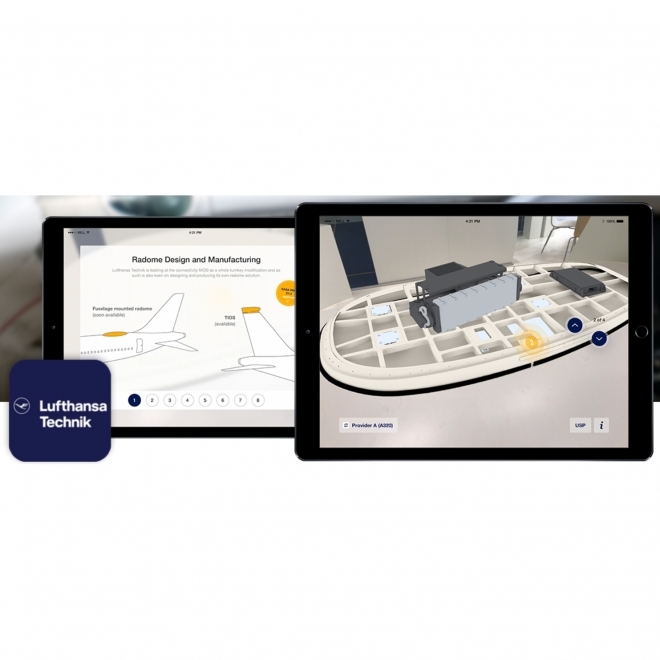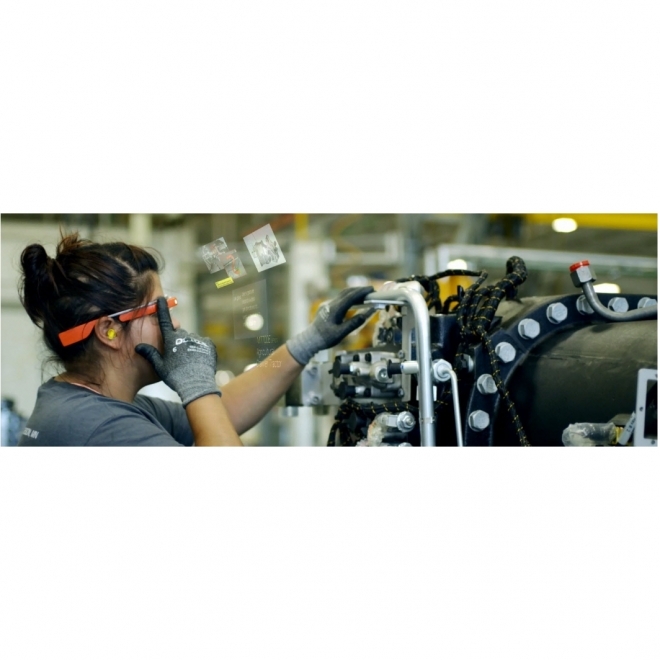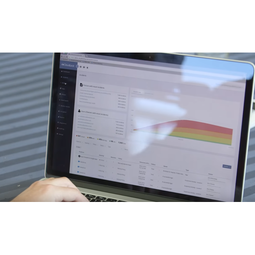Case Studies.
Our Case Study database tracks 18,927 case studies in the global enterprise technology ecosystem.
Filters allow you to explore case studies quickly and efficiently.
-
(5,794)
- (2,602)
- (1,765)
- (764)
- View all
-
(5,073)
- (2,519)
- (1,260)
- (761)
- View all
-
(4,407)
- (1,774)
- (1,292)
- (480)
- View all
-
(4,158)
- (2,048)
- (1,256)
- (927)
- View all
-
(2,488)
- (1,262)
- (472)
- (342)
- View all
- View all 15 Technologies
- (1,732)
- (1,626)
- (1,605)
- (1,461)
- (1,423)
- View all 42 Industries
- (5,782)
- (4,114)
- (3,091)
- (2,780)
- (2,671)
- View all 13 Functional Areas
- (2,568)
- (2,482)
- (1,866)
- (1,561)
- (1,537)
- View all 127 Use Cases
- (10,333)
- (3,499)
- (3,392)
- (2,982)
- (2,593)
- View all 9 Services
- (503)
- (432)
- (382)
- (301)
- (246)
- View all 737 Suppliers
Selected Filters
18,927 case studies
|
Boost in Online Orders and Aftermarket Revenues for Atlas Copco
Documoto
Printed parts manuals become less and less relevant and useful with time. The static information offered by printed documentation was no longer good enough for a major global player like ACC. ACC needed a solution that would deliver updated versions of documents to their network immediately. The company wanted a dynamic system, which would not only display current inventory levels, but also provide customers with information regarding how products should be used. Atlas Copco Construction’s Needs • Offer customers real-time part and information updates • Provide customers a comprehensive parts lookup and search platform • Administer an eCommerce platform with shopping cart and ERP integration • Produce a multilingual site for parts ordering
|
|
Issue and Defect Resolution
One of the world's largest complex hardware manufacturers' business units, responsible for the post-product validation process, was looking to speed up its time to market and the time it took to identify and resolve process issues. Duplicate debugging hardware and software issues was eating up 70% of production time, slowing down time to market and costing money.
|
|
Logistics Improves Efficiency with RFID Tags
Impinj
Qantas uses RFID tags to improve customer service and speed up check-in.
|
|
Industry 4.0 at ALPLA: Enhancing Factory Efficiency with IoT
Crate.io
ALPLA, a global leader in packaging solutions, faced several challenges as the complexity of their production machinery increased. The need for highly trained specialists in each factory led to higher personnel costs, difficulties in recruiting experienced talent at each location, and costly personnel turnover. Furthermore, less experienced operators running the machines sub-optimally impacted resource consumption and overall equipment effectiveness (OEE). ALPLA also faced the challenge of monitoring visual inspection systems in every line of their plants, which was almost impossible to do manually. In 2016, ALPLA decided to use data from the 900 different types of embedded sensors in each factory to address these issues. However, their initial choice of SQL Server as the data store for the sensor data proved inadequate, as it was unable to cope with their data requirements.
|
|
How Edge Computing Enables Predictive Maintenance of Valves
Infineon
Solution approach for monitoring production-critical ultrapure water valves with the aim of detecting possible failures at an early stage and better planning maintenance processes.
|
|
CodeMeter Protects Belsim's VALI Software
WIBU-SYSTEMS
All industrial measurements are inaccurate and uncertain. As a consequence, a company never has rigorous information about its processes. What’s more, the real numbers about process performance may very well remain hidden in measurement noise. Belsim develops Data Validation & Reconciliation software that automatically corrects measurements in industrial processes. The VALI-suite is the result of many years of R&D and it represents the centerpiece of Belsim’s intellectual property. This led Belsim’s search for a robust yet flexible solution for software protection and license management.
|
|
Utilities Homogenous System
mPrest
The utilities sector is characterized by myriad unconnected, legacy-based heterogeneous systems offered by several vendors that operate according to different standards (e.g. Ethernet, SCADA, OPC, ONVIF, MODBUS). Each system typically covers a particular area of activity (e.g. temperature, pressure, noise, alarm, access control), and is not integrated with the others. Due to this complexity, utilities management teams typically find it difficult to create a coherent, cross-organization situation picture, and to make operational decisions.
|
|
Optimizing Inventory & Anticipating Maintenance
An aircraft manufacturer wanted to improve their spare part inventory management for 15,000 out of production aircraft. Customers needed stock parts that couldn’t be sourced since they were never required to be repaired or replaced on the aircraft. The parts would need to be produced on demand and have a long lead time for production - typically up to six months - resulting in airlines grounding their aircraft at an average loss of one million per day. As a result, the manufacturer needed to anticipate which of their spare parts would fail before an issue was communicated - leading to better inventory planning, supply chain decision making, and a total reduction in operating costs. Additionally, the company wanted to know whether to purchase more than one spare part at a given time when a problem had been reported, whether they should stock a certain spare part in advance due to the long lead time, and whether they could reduce the number of service engineer man hours spent answering customer questions about the stock parts by having better access to information. Stocking decision was also made difficult because of limited communication between the spares management employees and the service engineers, resulting in high levels of ‘dead’ stock for the manufacturer. The goal was to reduce maintenance costs and increase customer satisfaction and retention without compromising aircraft production quality, safety and lives.
|
|
Executing Precision Farming to Maximize Yields
Dacom
Traditionally, farmers either apply a high dosage or a high number of repeat sprayings of chemicals as they do not want to risk any disease or damage to the crops on which their livelihoods depend. This is quite inefficient in terms of both time and money wasted. Dacom aimed to increase the effectiveness of these farmers by providing them with accurate, real-time, and streamlined information.
|
|
Fleet Management Connectivity Solution for Marzam
Telefonica
Marzam, in order to ensure the best service, invested 3 million dollars in the construction of 2 fuel oil tanks with 40k gallons and 10k gallons capacity each, located in Manta, Ecuador. The customer needs to keep fleet operations going with fuel available at all times in order to guarantee quality of service. KEY ELEMENTS FOR THE CUSTOMER: Real-time level monitoring: Tank infrastructure remote level monitoring. Configure alerts and notifications when reaching critical values to avoid the need for emergency refills and optimize supply schedules. Real-time consumption monitoring: The customer needed an easy way to monitor in real-time accurate values of consumption.
|
|
Smarter Traffic Enforcement: Cameras, Weather Stations, and Speed Limit Signs
Faltcom
The Transport Administration is responsible for Sweden’s infrastructure. They plan the transportation system, decide on building projects, provide maintenance, procure services and are responsible for traffic information. In the early 1990s, the Administration introduced speed cameras, which monitor traffic on certain roads and photograph violations. The problem was that the cameras had to be emptied manually, which led to time-consuming administration and extra travel. The requirements for the new solution were higher: In addition to being connected to the cloud, the requirements for reliability and accessibility were extremely high.
|
|
Smart Meter Automation Powers Customer Service at Jersey Electricity
WhereScape
Although Jersey is not a part of the UK Smart Meter roll out, Smart Meters are a central part of a large-scale government project to upgrade the UK’s energy system, replacing around 53 million existing gas and electricity meters by 2020, allowing consumers a more accurate view of their energy consumption. Designed to provide ‘near real-time’ information on energy use, smart meters will enable consumers to manage their energy use, allow supplier switching to take place more easily and remove the need for suppliers to read meters and provide estimated bills. As the sole supplier of electricity across the island, Jersey Electricity decided to proactively rollout smart metering ahead of the rest of the UK, aiming for installation of up to 45,000 meters for domestic and commercial customers by the end of 2018. Planned as a three-year project, Jendev, its subsidiary utility software development business, examined a variety of options to deliver key components, including the smart meters themselves and the critical data warehousing technology to gather, store and analyse the data provided by every smart meter. This data collection and analysis presented an important challenge. In every property, the smart meter needs to take a daily consumption read as well as 48 half hourly reads, 365 days a year – an eventual total at the end of the project rollout approaching 1 billion reads per year. This data is passed from each property to a data concentrator in its local substation, which are all polled daily to collate data in the central data warehouse for processing and analysis.
|
|
Using Insight-driven IoT Services
ThingLogix
There are 5 million in ground swimming pools in the US, with 1.5 million in California alone. These pool owners waste $30-90 per month on electricity running their pool pumps for too long and at times when utility rates are high. The PoolEnergy team has been working with SDG&E, the CPUC, EPA, and DOE to oer an intelligent energy management system for pool owners. This system is a combination of energy eciency and demand response services saving property owners money and creates a sustainable smart grid resource in energy emergencies.
|
|
Eseye Pipe Leakage Detection
Eseye
3.3 billion litres of water are lost through leaking pipes each day in the UK. As a result, water authorities face increasing demand to find innovative ways to monitor water flow within pipes. Currently, GSM data loggers are used to monitor water flow wirelessly and improve the efficiency of dealing with leaks. The big problem with GSM loggers is they use a network specific SIM, which means different SIMs are required for different locations due to network coverage.
|
|
Optimizing C&A's Energy Consumption
Telefonica
Optimize energy consumption in their retail stores with the highest consumption and their logistics center.
|
|
Real-Time IoT Tracking and Visualization Improve Manufacturing
Fujitsu
Shimane Fujitsu, a wholly-owned subsidiary of Fujitsu and a leading manufacturer of business notebooks and tablets, set out to improve processes where factory inspections found product errors. Prioritizing product rework based on shipping date was challenging, and it caused Shimane Fujitsu to incur additional shipping fees. The company needed a way to collect data to better track the location of products in the rework cycle as well as monitor progress in real time. The collected data would also help process analysis for future improvements.
|
|
Honeywell Analytics Efficiency Improves with Eden
Honeywell
Honeywell Analytics established a customer service call centre which has ten call centre agents handling 1,500 calls per week.The agents were using a customer management software which was effective for capturing basic customer details, but inadequate for collating a service record for the customer's individual unit or linking to other company IT systems. An integrated system was needed to manage the process from initial customer call through to successful resolution such as the dispatch of a replacement or repaired product.
|
|
WLAN Enables Constant Connectivity Between Moving Trains and Trackside
MOXA
The link between the fast-moving train and the broader fixed trackside infrastructure has always been one of the key components of a train communications network. A major rail operator in Japan sought to build a trackside infrastructure that will offer a corridor of wireless coverage on and around the track. This would give the wireless clients on the train constant high-speed connectivity to support applications both onboard and along the rail line. There are numerous issues to face before this network is ready to tackle challenging CBTC operations: - seamless roaming is needed to provide uninterrupted communications, - EMI/EMC compliance is critical to ensure that there is no system performance degradation due to harsh wayside operating conditions. System Requirements • Constant high-speed connectivity along the track • Optimized AP coverage along a 20 km route • Seamless roaming between trackside APs • Open standards secure future upgrade path • Compliant with rolling stock and trackside standards
|
|
The Medical University Simplifies Network Management with BlueCat
BlueCat Networks
With nearly 3,000 students in six colleges, 1,500 full and part-time teaching staff and a 750-bed medical center, the Medical University of South Carolina (MUSC) is the only comprehensive academic health center in South Carolina. MUSC offers educational programs in the biomedical sciences, dentistry, health professions, medicine, nursing and pharmacy. Each year, MUSC admits almost 33,000 patients to its hospitals, while its outpatient facilities serve 800,000 patients. MUSC’s network spans 30+ remote sites and its IP address space is comprised of approximately 30,000 IP addresses. The network must support the diverse needs of both the hospital and university, as well as the intensive demands of medical researchers for online collaboration.
|
|
Quality compressed air for high-tech products
When it came to modernisation of the existing compressed air station, the company’s management decided to opt for a compressed air contracting arrangement to ensure that the compressed air supply would always meet the latest technical standards and be capable of taking advantage of the benefits that Industry 4.0 has to offer – and not least due to the frequent fluctuations in demand in the automotive supplier industry. In this operator model, the compressed air station itself remains the property of the air system provider, whilst the customer simply uses the compressed air as needed, just like power from an electrical socket, paying only for the volume of compressed air actually used – and always at the same fixed rate. From an accounting perspective, this effectively turns fixed costs into variable costs. At Scholz, the new station was installed in a space-saving container on the roof of the company building.
|
|
Safety Wi-Fi Socket for Smart Home Solution
Wireless-Tag
To create a home automation environment, let user have a more comfortable, more energy efficient, safer household life
|
|
Enlightened energy efficiency at Zumtobel
COPA-DATA
Several years ago, Zumtobel started a new measurement project. The aim of this project was to profit financially through a sustained program of energy efficiency while simultaneously protecting the environment. Zumtobel was looking for a clear visualization solution well-suited to facility management. The aim was to measure not only energy data on electric meters, but to collect and save data from the whole facility for later analysis.
|
|
Using LonWorks to Keep Acela Trains Zip Along
Adesto Technologies
Canadian transportation company, Bombardier was tasked with building a bullet train system on rails that were designed for lower speed trains. In addition, they had to ensure safe and optimal operation at high speeds, maximize train uptime and enhance communication with passengers.
|
|
Saving Energy on Campus with Energy Optimization Technology
Utilidata
The Project Universities have long put forth great effort to improve overall energy efficiency for buildings and facilities on campus. To improve electrical energy efficiency, universities have used more economical lighting systems, high efficiency motors, building management systems, and other measures. However, there is one area of electrical energy conservation that has been almost totally overlooked – the energy savings that can be realized by optimizing campus electric distribution voltages. Like many universities across the country, Murray State University (MSU) consistently looks to improve energy efficiency on campus. MSU’s 236-acre main campus is in Murray, KY, a city of approximately 18,000 residents. Founded in 1922, the university has grown from an enrollment of 202 students to 10,400 today. The University buys all its electrical power from Murray Electric System (MES), a municipally owned Tennessee Valley Authority (TVA) distribution utility. In March 2011, Utilidata deployed its AdaptiVolt™ voltage optimization software on Murray State University’s campus. The patented AdaptiVolt™ software has been installed at major electric utilities and industrial facilities in the U.S. and Canada, providing significant energy savings when implementing conservation voltage reduction.
|
|
Optimizing Healthcare Practices Improves the Patient Experience
Dell Boomi (Dell)
DJO Global developed the MotionMD software solution that automates DME claims management, inventory dispensing and physician protocols, which in turn helps optimize productivity and improve patient outcomes with point-of-care technology. The company’s technologies also help providers improve billing accuracy and ensure timely collection of reimbursements. For both physician practices and hospitals, integrating patient data across systems has historically been a challenge, requiring complex processes, significant manual labor, painstaking repetitive data entry and piles of error-prone paperwork. With the widespread adoption of billing and revenue management software modules, electronic medical records (EMRs) and practice management systems, healthcare organizations have seen the need for data integration solutions to deliver the right information at the right time, while adhering to HIPAA security regulations.
|
|
Solavei Case Study
GlobalLogic
Solavei offers $49 unlimited voice, text, and data mobile service on a nationwide 4G network. Solavei enables members to connect, share and capitalize on the power of social networks through its platform. Solavei launched with a mission to make commerce less expensive and even profitable by empowering individuals to earn income on the products and services they enjoy and use every day. Solavei is the first mobile service that pays people back for adding new members. The company partnered with GlobalLogic to build this groundbreaking idea from concept into a full-fledged working solution. Currently, GlobalLogic owns the engineering arm and partners with Solavei to drive the platform's evolution.
|
|
Warehouse, goods transportation management
Kalewa
Courier delivery enterprises need intelligent locks for terminal authorization unlock, check and control through the unlock record.
|
|
Lufthansa Innovates Aviation Demo With Augmented Reality
Wikitude
The shipping and installing the physical demo equipment to be displayed at trade show exhibitions is expensive, time consuming and requires significant manpower.
|
|
AGCO is Increasing the Efficiency of its Manufacturing Programs Using Glass
Google
The thorough inspection of a finished product is an essential step in the quality-control process. In the beginning, quality checklists were accessed using paper on clipboards. As technology improved, computers were utilized. But computers required additional time to access, and couldn’t be carried to the equipment being inspected. Tablets replaced computers, but were easily broken and expensive to replace.
|
|
Sunnova Energy Case Study
CloudLock (Cisco)
Sunnova manages residential solar panels. In this case, there's data coming from different sources and way. They really need a way to have a fundamental understanding of their data to meet regulatory, policy and confidential APIs.
|








